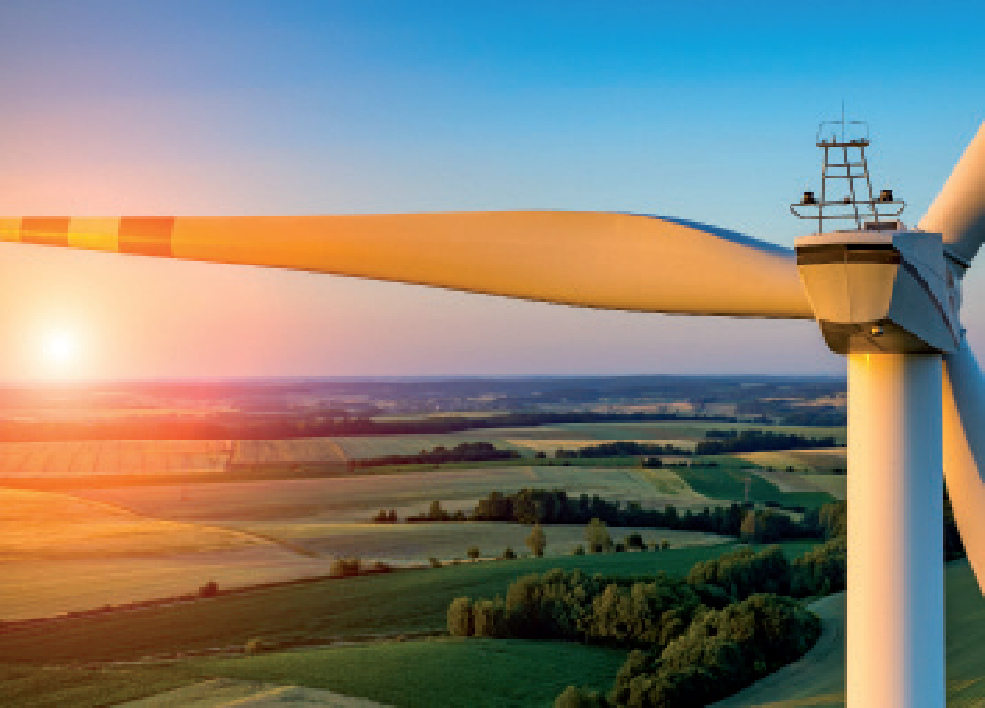


Growing population will inevitably lead to the growth of the agriculture and agri-food sectors. They will only be able to reduce their carbon footprint by making changes in the way food is produced, but the solutions exist.
Energy consumption in the food industry already accounts for more than 30% of global primary energy consumption and more than 20% of greenhouse gas emissions. Trying to provide sufficient quantities of good quality food and water is a challenge for all of us, as farmers, food processors, transport companies, distributors or consumers.
On our planet, land use, biodiversity and resources are already suffering from climate change. In one part of the world, periods without rain are getting longer and droughts more intense, whereas elsewhere spring comes earlier and earlier, but late frosts persist. Under these conditions, how can we produce more and better while respecting the planet’s limits and reducing the competition between agriculture and energy production, for example when solar panels cover large areas of land?
ENGIE takes a close interest in these issues, but why exactly?
The answer is because ENGIE is by the energy consumer’s side on a day-to-day basis, providing them with greener and more efficient energy wherever they live. And of course farmers and the food industry need a lot of energy, such as for agricultural machinery, heat for drying crops before storage, cold to preserve raw or processed foodstuffs, electricity for irrigation or organic matter to produce biogas etc. ENGIE provides for integrated solutions that supply green energy and improve the energy efficiency of the entire food production chain, even contributing to making fertilisers greener. However each region is different and technologies need to be adapted to different agricultural sectors, geographical areas and parts of the agri-food chain. To meet the wide variety of different situations, ENGIE implements field projects in partnership with farmers and agronomists, which endeavour to meet their needs as closely as possible.
If we take a few examples of our pilot projects, we will see that we can significantly reduce the carbon impact of the food we eat. These projects aim to answer three questions:
FROM FIELD TO GREENHOUSE
The first project deals with competition for land by studying how best to combine food and solar energy production on the same area of land. It analyses the best combinations of PV panels (of different types) and food crops that grow better in the shade, taking into account different climates.
The second pilot project aims to reduce emissions from greenhouse crops. Greenhouses cover an area of about 10,000 hectares in France, two thirds of which are used for vegetables. The aim is to improve energy efficiency to the point where such crops become carbon neutral, bearing in mind that, according to the Ademe, depending on the region they currently consume between 270 and 330 kilowatt-hours per square metre. On average, this energy represents 22% of the direct production costs of greenhouse farming. For this project, ENGIE established a partnership with Wageningen University & Research in the Netherlands to design a greenhouse that is autonomous, notably in terms of energy. The test greenhouse has been equipped with water, soil moisture, light, oxygen and CO2 sensors, amongst others, in order to obtain optimal growing conditions, whilst limiting carbon emissions and energy consumption.
USE OF GREEN HYDROGEN
The third project addresses the production of sustainable fertilisers. Crops need water and CO2, but they also need nutrients such as nitrogen, phosphorus and potassium. Nitrogen is provided by various synthetic compounds made from ammonia using the Haber Bosch process (the catalytic hydrogenation of atmospheric nitrogen), however the hydrogen gas used as a catalyst is often fossil fuel-based.
ENGIE is developing new processes to produce green hydrogen by using surplus green electricity for the electrolysis of water. Today this process, which would help produce more sustainable fertilisers, is centralised in very large-capacity plants. One of the challenges of the research programme is to study the technical and economic interests of relocating this production as close as possible to the site of consumption. Not only would this limit soil pollution, but reducing the transport of fertilisers would also lessen air pollution. These solutions deployed alone or in combination will not affect food quality, but they will reduce its carbon footprint. These initiatives are not isolated. They complement an array of high-tech (precision agriculture, urban agriculture, etc.) and lowtech (no-till farming, etc.) solutions. They will develop in parallel across cities around the world depending on farm size and the capacity of farmers to adopt these new technologies. In the medium term, the most affordable and mature technologies, such as the use of new sensors to optimise production and processes, will become widespread. At the same time, consumers will need to mobilise and lobby producers in order to limit carbon emissions caused by food transport, reduce food waste and improve traceability. According to the latest overview of emerging technologies by DNV GL, city dwellers will move toward sharing local resources. This will take the form of food cooperatives based around local, low-carbon food production. In this way, we can reduce the carbon footprint of food from farm to fork to the minimum.
Written by:
Elodie le Cadre Loret & Bérengère Genouville, ENGIE Research
This article was first published in Pour La Science.